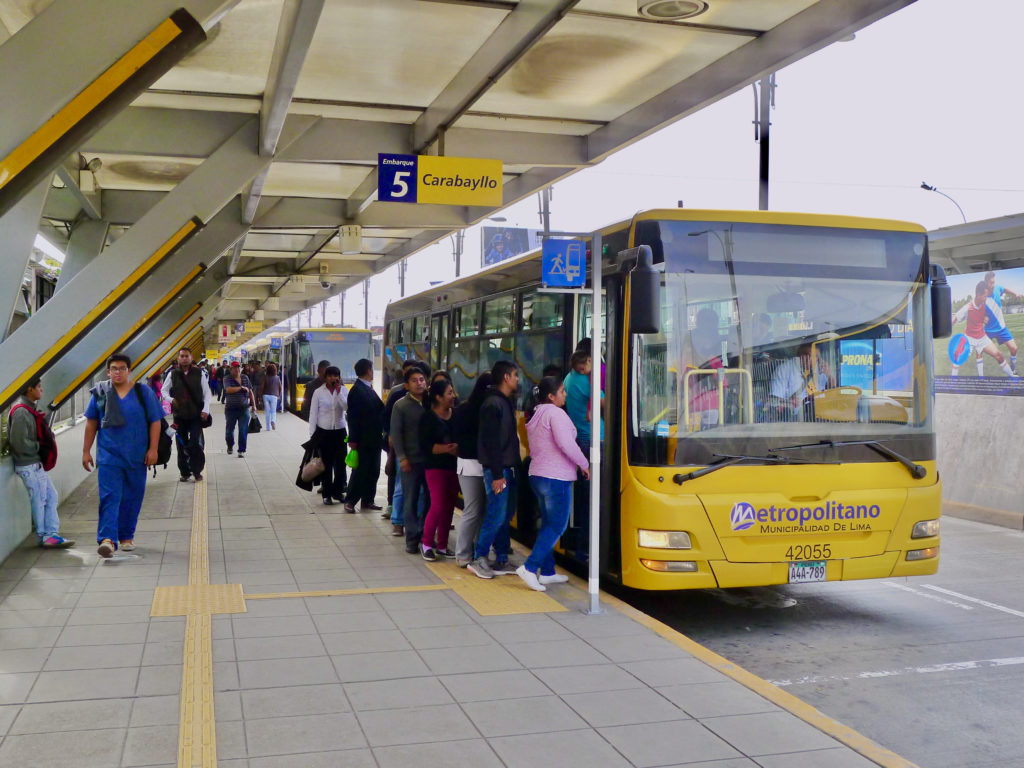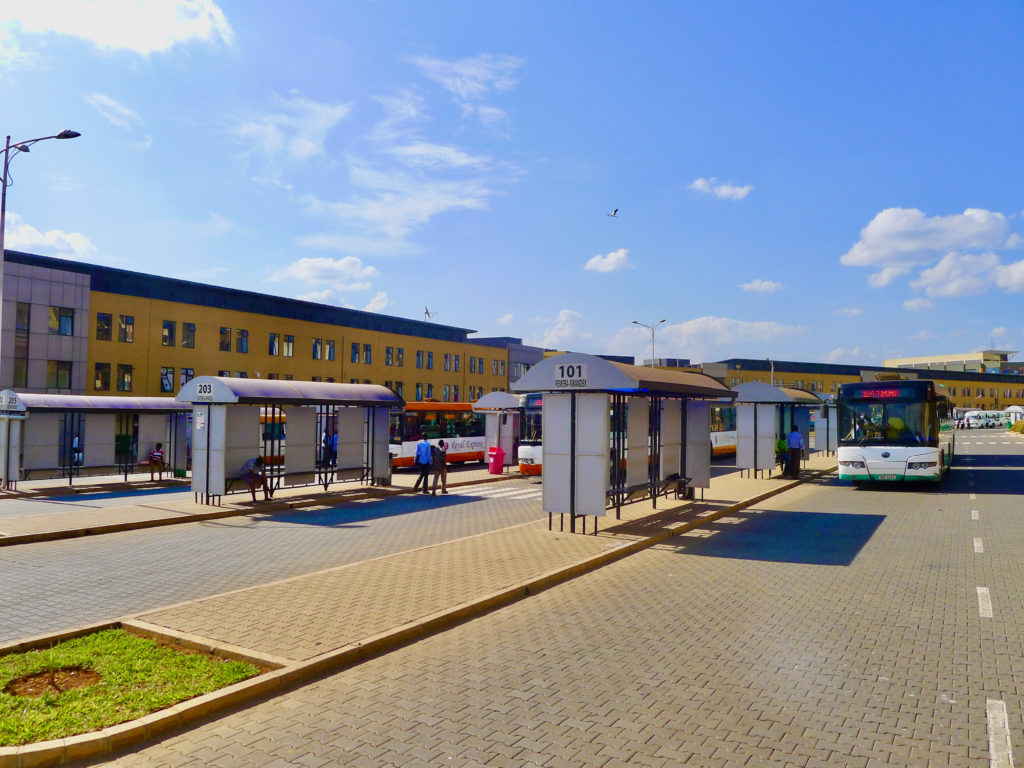October 19, 2020
Rethinking Public Transport: Global perspectives on bus sector transformation

In the second annual Growing Smarter conference, stakeholders from the around the world converged for a two-day virtual dialogue on how to achieve higher quality public bus transport services. Industry stakeholders acknowledged that while modernising the public transport industry in emerging cities is no easy feat, being cognizant of the potential challenges during the transition is essential in order to ensure an inclusive and equitable transformation process.
The conference, held from 16-17 Sep 2020, included case studies and conversations from industry leaders and government officials on challenges and opportunities in the public transport modernisation process. The Growing Smarter Project is implemented by the Institute for Transportation and Development Policy (ITDP) and the United Nations Human Settlements Programme (UN-Habitat) with support from the International Climate Initiative (IKI).
The conference began with a speech by Eng. Michael Njonge from the Nairobi Metropolitan Area Transport Authority (NAMATA), who highlighted NAMATA’s plans to introduce high-quality bus rapid transit (BRT) services on five corridors. He also noted that the BRT implementation will be guided by the NAMATA BRT Framework in order to ensure quality and efficiency.
Rehana Moosajee, Barefoot Facilitator and former Mayoral Committee member, City of Johannesburg, gave an overview of the journey to the implementation of the Rea Vaya bus rapid transit (BRT) system, the first BRT system in the African continent. Rehana noted that Johannesburg’s transport system was planned under the apartheid system to keep people apart, leading to long commutes and congestion. Low income residents live on the periphery of the city, making a more efficient public transport system essential to improve access to opportunities.
Rehana recalled that political will and leadership were key factors in the drive to implement the BRT. She also noted that the transition process wasn’t easy. The implementation of the BRT system was strongly opposed by some, leading to strikes and shootings of commuters and drivers. Despite these challenges, the dream of having a sustainable and accessible transport systems kept the implementation team focused. Professionals worked with the community on the design and implementation of the BRT system and in the end, 300 taxi operators from ten different associations handed in 585 minibus vehicles, which were replaced with 134 modern BRT buses in the system’s first phase.
Walter Hook from People Oriented Cities presented on how cities can transition to improved bus services, drawing on ITDP’s Quick Guide to Bus Sector Modernisation. He noted the need for governments to play a more active role in public transport regulation, including taking on financial risks and shifting from commercial operating licenses to service contracts. He reiterated the need for governments to build capacity in order to monitor public transport operations and service quality.
During the second part of the session, panellists from around the globe shared their experiences on achieving better bus services. Ronald Lwakatare, from the Dar es Salaam Rapid Transit (DART) agency, shared Dar es Salaam’s journey and the transition process from daladalas to the BRT system. He noted that the BRT system has improved travel speeds and contributed to socio-development in the city. For an efficient BRT system, Ronald reiterated the need for diligent planning, sound operational and business models, integration between BRT and other modes of transport, efficient information technology systems, and an automatic fare collection system.
Alfred Byiringiro, Transport Division Manager, Ministry of Infrastructure, Rwanda, spoke on the formalisation of the bus sector in Kigali. He mentioned that the public transport industry was restructured in 2013. The process included improving bus shelters, reducing waiting times at terminals, and introducing smart card payments. The improved waiting time was a result of expanding the bus fleet. All public transport services in Kigali are operated by formal companies that have defined routes to ensure accountability and efficiency. A case study on the transformation process is also included in the Quick Guide to Bus Sector Modernisation.
 A Bus Terminal in Kigali Rwanda
A Bus Terminal in Kigali Rwanda
Mary Chege, a board member from NAMATA, spoke on the steps the agency is taking to integrate all modes of transport in Nairobi. She noted that the different road agencies are working on improved strategic planning and coordination to ensure successful and efficient implementation of public transport systems. The institution’s council and board of directors includes representation from the ministries, state departments, governors of the metropolitan counties and members of the Nairobi Metropolitan Service (NMS). NAMATA is engaged in active dialogue with the matatu industry to facilitate the transition to BRT services.
Oscar Diaz, a bus transport expert who was involved in the implementation of the Transmilenio BRT and SITP bus services in Bogotá, Colombia, presented on the challenges that both systems have faced, and the steps taken to improve operational efficiency. He mentioned that some of the challenges were as a result of poor contracting agreements between the operating companies and the government. Some zones became inefficient and therefore were not fully integrated into the new system. The government issued an addendum to the contracts in 2019 in order to improve integration and financial viability. As of 2019, Bogota has 483 fully electric buses and 794 Euro VI buses.
The second day of the virtual conference involved discussions with bus operators and public transport stakeholders on how best to forge the transition. Panellists included Darko Skrbinsek from Future of Transport Consulting, South Africa; Edwins Mukabana from Kenya Bus Service; and John Mark Mwanika from the Amalgamated Transport and General Workers’ Union, Uganda. The panellists highlighted the need for government investments in public transport operations.
“Government has to have a firm stand in the transformation process: not to dictate or become autocratic, but their vision must be firm and their intent to implement transformation must be more firm,” explained Darko. John Mark added that the successful transitions in Tanzania and Rwanda reflected the commitment of the respective governments to achieve improvements in their public transport systems. “They dropped everything else and made this a priority for the city and country,” explained John Mark. “There was deliberate government intervention.” The panellists also noted that African cities were unique, and the formalisation process would need to be customised for each city. Stakeholders agreed that there is a need to formalise current informal minibus systems to formal more efficient companies.
During a breakout session on financing high quality buses, Jan De Man from the Busworld Academy, noted that today, buses are implemented as systems. He explained that the biggest challenges affecting modernisation are the lack of capital and the presence of the diverse stakeholders with different priorities in the sector. To tackle these challenges, Jan mentioned that there is need to formalise bus companies and implement efficient government regulations. This was reiterated by Neji Larbi from the African Development Bank (AfDB), who agreed that that the lack of formal bus companies in Africa has made it difficult to introduce high-quality transport vehicles. Guy Davies from Disability Solutions in South Africa noted that accessibility is a challenge for wheelchair users in minibuses in the Africa region, especially due to the fact that redesigning vehicles to accommodate wheelchairs would lead to revenue loss. To respond to these challenges, Akiko Kishiue from the World Bank spoke on the need for financial institutions to consider inclusiveness, accessibility, acceptability, and affordability when funding public transport improvements. The panel also featured case studies from Mwasalat Misr in Egypt and Kiira Motors in Uganda by Mohsen Sabra and Paul Musasizi, respectively.
The conference also evaluated the need for resilience in public transport. The COVID-19 pandemic led to the grounding of public transport in some cities, while others adopted social distancing measures. Panellists shared evolving experiences from across the world. Hallie Liao from Shenzhen Bus Group shared experiences from China, noting that bus companies in China were subsidised by the government in order to maintain low fares for customers. The case was similar in Europe, as explained by Raluca Marian, a Busworld Academy expert and Head of the European Office of the International Road Transport Union. Both presenters noted that initially there was a shift from public transport to walking, cycling, and personal vehicles. Ridership in China has since improved to about 80 percent of initial levels.
Mitku Asmare from the Federal Transport Authority in Ethiopia shared Addis Ababa’s plan to increase the number of buses to accommodate the growing demand for public buses in Ethiopian cities. He mentioned that despite the COVID-19 pandemic, there is high demand for public transport in Addis Ababa. Catherine Kalisa from UN-Habitat Rwanda noted that even after the lockdown period, travel has been limited in Kigali, reducing the demand for public transport. She noted, however, that to improve passenger confidence, the city has installed sanitation stations in terminals, and the wearing of masks in buses has been enforced.
Anna Karume from International Transport Workers Federation (ITF) highlighted the need to implement labour laws in order to safeguard public transport workers from COVID-19. She reiterated the need for government agencies such as the National Transport and Safety Authority (NTSA) in Kenya to prioritize the welfare of public transport workers. Cosmas Ngeso from NTSA agreed with her sentiments and the need for formalisation as a way to ensure workers are safe. He also noted that NTSA is implementing a cashless fare collection system in Kenya, which will be integrated with other modes of transport.
The conference was an opportune time to discuss public bus systems, regulations, and reforms. The discussions highlighted opportunities for improving efficiency in bus transport in African cities. ITDP and UN-Habitat would like to thank the panellists and participants for being part of an engaging conference.
The conference presentations and recordings are available here.
